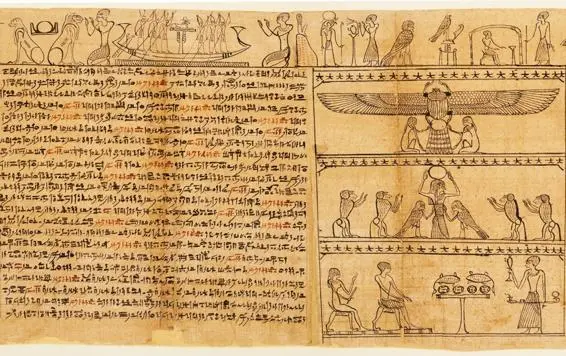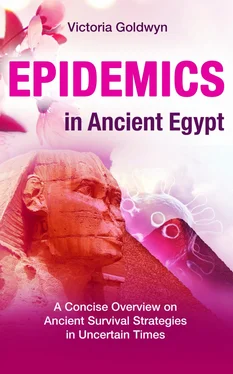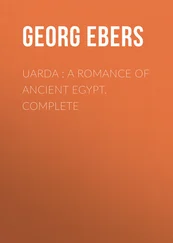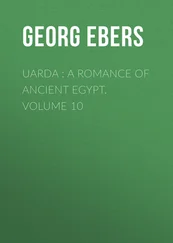Material magical tools could be:
materials and the symbolism of their colors,
amulets,
the entire funerary equipment, including tomb models, servant figures, and ushabtis,
remedies,
magic knives (or birth tusks)
offerings or also
concrete objects symbolizing the enemy.
By linguistic magical tools, we understand, for example:
recited texts, hymns, and litanies (repeated chanting prayers),
pyramid texts,
coffin texts,
the Ancient Egyptian Book-of-the-Dead,
afterlife guides such as the Amduat,
magical letters to the dead ancestors,
and much more.
They performed spell actions for preventive protection . The spells worked as concrete defensive steps to create the desired event or restore a previous state.
This took the form of rituals through
incenses
libations (pouring liquids)
symbolic smashing and destruction
real or symbolic slaughter
gestures or
offerings.
Even the compliance to chastity rules and the cultivation of purity can be interpreted as part of a magic act as soon as it happened with the intention of a concrete, foreseeable manifestation.

Fig. 7: Book-of-the-Dead of the priest of Horus, Imhotep, ca. 332–200 B.C., Early Ptolemaic Period.
The Spell
Each magical act came along with a spell, which was called ra . Another Ancient Egyptian term is shenet , the invocation . Sometimes it was also written down as sa:ooh , which means protective spell . Collections with the records of many spells were referred to simply as medjat , the book, or as ra:ooh , the plural form of ra .
The archaeological evidence from which we draw our present knowledge of the spell-casting practices of the Ancient Egyptians is usually papyri, ostraca, statues, stelae, and other objects.
The spells very often follow a unique scheme:
a heading, the so-called spell title,
the core text of the spell, and
an instruction for handling or commentary.
The latter often contains a listing of materials, ingredients, or similar and is accompanied by instructions for processing and application. This is practically comparable to the package leaflet of modern drugs.
Recipients of the spells are either the good deity, which is to produce the desired state, or the enemy, or the opposing energy, for example, a demon, whose influence is to be weakened. It is interesting to note that the recited text presents the facts in different ways:
stating, that is, the simple statement and description of a condition.
narrative, that is, telling a story around the desired state, or
discursive, which means creating an argument with a deity.
In terms of content, spells often reflect the mythological stories surrounding the Gods Isis and Osiris , the battle of the God Horus against the God Seth , or the narratives surrounding the Sun God Ra . Thereby it is always first about the determination of danger, for example, the injury of Osiris and his subsequent healing. Thus, an analogy is always created using known legends.
The Procedure of Magical Manifestation
Equipped with these standardized spells, a magician could now perform the actual magical ritual. In doing so, he had several options, each of which depended on the purpose of the action. In most cases, this was done by recitation and application .
In the recitation, the magician repeated the magic spells and at the same time could add material equivalents to strengthen the manifestation, for example, by untying a knot in a rope. Spells could also be chanted or shouted.
During application, objects charged with the spells could contact each other to produce the desired effect, such as direct contact between an amulet and the injured body part.
Ideally, recitations were performed in the morning. According to the belief of the Ancient Egyptians, the powers of darkness lost strength at this time. They began to recede with the disappearance of the night.
The magic act and the corresponding spells were subject to strict secrecy , a prerequisite for their effectiveness. The knowledge of the identity of the God or demon caused a disease often played a unique role.
If the magician knew his name and could address the God or demon directly with his spells, this gave him power over him.
The magician then puts himself in the place of the God or demon with the powerful formula
>> I am...
at the beginning of a magical procedure. In the end, often a disclaimer took place, and the magician rolled back the entire thing again in which he conjured,
>> It is not I who says this, but the God.
This procedure shows impressively how the Ancient Egyptian healer and magician used the sacred world’s powers.
The Ancient Egyptian magical acts referred to various conditions that were either fought against or realized positively.
Particularly prevalent were the magical acts against concrete or abstract dangers . Such dangers could come from wild animals, such as scorpions or snakes, and invisible or intangible demons. In addition, the feeling of being pursued by the evil eye emanating from unfavorable or even hostile-minded other people already existed in Ancient Egypt. Therefore, the Ancient Egyptian could defend himself prophylactically or in the concrete case of suspicion against it with a protection and defense spell.
According to the belief of the Ancient Egyptians, the work of deities could be the cause of the occurrence of diseases. So, the healing spell against a disease in a person’s body was a proven method to restore the original health. Therefore, in the following section about Ancient Egyptian Medicine we will now deal in detail with the sources of magical healing practices of the Ancient Egyptians, their mechanisms, and their archaeological evidence.
Конец ознакомительного фрагмента.
Текст предоставлен ООО «ЛитРес».
Прочитайте эту книгу целиком, купив полную легальную версию на ЛитРес.
Безопасно оплатить книгу можно банковской картой Visa, MasterCard, Maestro, со счета мобильного телефона, с платежного терминала, в салоне МТС или Связной, через PayPal, WebMoney, Яндекс.Деньги, QIWI Кошелек, бонусными картами или другим удобным Вам способом.













